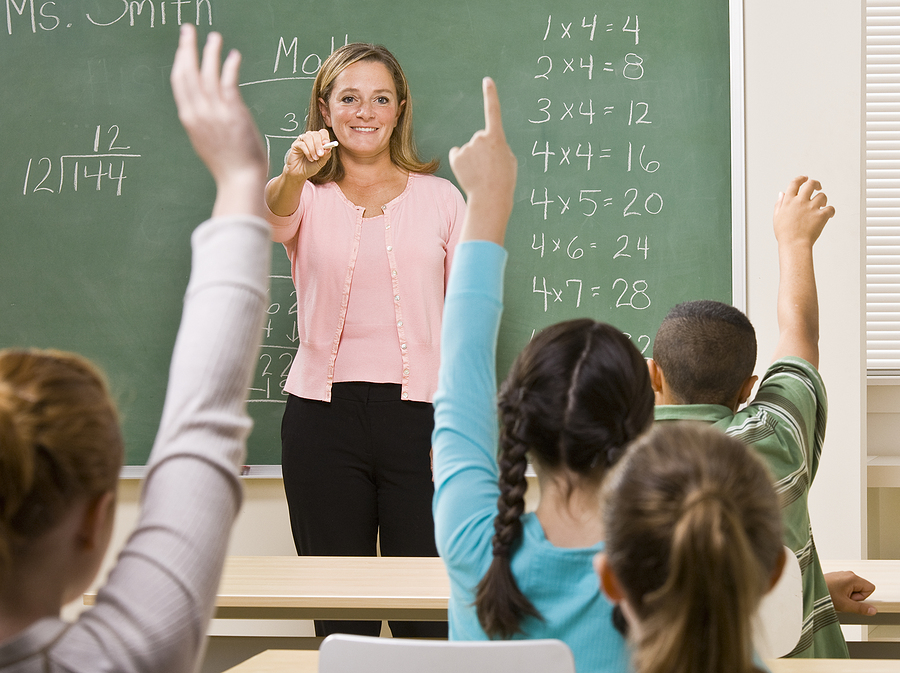Is Pennsylvania having a teacher shortage? It depends on who you ask.
Some look at an increase in the number of teachers in classrooms statewide, coupled with decreasing student enrollment, and conclude the teacher-shortage crisis narrative is bunk.
But education experts said statistics only tell part of a complicated story. They point to a troubling trend of fewer new teachers entering the workforce.
A decade ago, the state certified about 20,000 new teachers. Last year the number was only 6,000, said Laura Boyce, the executive director of Teach Plus Pennsylvania.
The education nonprofit is working with state education officials to increase the recruitment and retention of educators who are increasingly complaining of burnout, especially after the challenges presented by the COVID-19 pandemic.
Many educators worked double-duty, preparing lesson plans for different platforms as schools shifted between virtual and in-person learning amid shutdowns and tightened restrictions.
“My first thought on that is when we talk about shortages in any other profession, we talk about supply versus demand,” Boyce told DVJournal. “Demand for teachers is high and potentially rising. And we’ve seen the number of new teachers (entering the field) decline. We see higher rates of teachers leaving the profession… I don’t see a lot of denialism that this is happening. We’re seeing an exodus of qualified teachers. I think there’s enough overwhelming data” to support that.
Actually, no, says the Commonwealth Foundation. It points out in a new report that statewide public school enrollment has dropped by 120,000 students, or 6.6 percent, since 2000.
Public school enrollment declined from about 1.78 million students during the 2010-11 school year to roughly 1.68 million in 2021-22, according to state data reviewed by DVJournal.
Meanwhile, the state has added about 20,000 more employees, up 8.7 percent along with a nearly 40 percent growth among administrators. State data also show the number of full and part-time teachers employed for the 2020-2021 school year was 123,461, up from 119,790 in 2015-16.
More teachers and fewer pupils, the Commonwealth Foundation argues, doesn’t add up to a shortage.
And, the organization adds, there is no shortage of taxpayer funding, either.
This year alone, the state’s education budget soared to about $7.6 billion, including a $525 million bump in basic education, plus another $225 million to help underfunded districts. School districts receive most of their funding through local property taxes rather than state or federal revenue. Average teacher salaries hovered around $71,000, which was the 11th highest in the nation, Commonwealth said. Funding for public education nearly doubled in the last decade.
The state Department of Education laid out a comprehensive plan earlier this year called the Pennsylvania Educator Workforce Strategy, detailing how it hoped to increase the number of teachers over the next three years.
“By August 2025, the state will need thousands of new teachers, hundreds of new principals, and thousands of educators in other critical roles trained and ready to guide our students’ educational futures,” the report said.
At a press conference this year, the state’s acting education secretary Eric Hagarty said teaching was the “profession that unlocks the workforce for all other professions,” according to The Philadelphia Inquirer.
Yet not enough people are thinking of teaching as a viable profession.
To address that, officials hope to bolster the number of students enrolled in teaching preparation programs from 18,000 to 21,600 over the next three years, the report outlined.
And they hope aggressive recruiting and policy changes that make it easier for teachers to get credentialed and expanded apprenticeships will nip at the number of vacancies across the state.
State officials say districts serving low-income students are “bearing the brunt” of the alleged shortages and have more trouble filling vacancies.
For example, in Philadelphia, the state’s largest district, about 169 teachers left the system between Dec. 1 and Dec. 15, double the number of teachers who resigned from the previous year, according to Chalkbeat.
More “underqualified candidates” are brought in to fill the void, said Boyce, who taught in the Philly area and recalled juggling teaching responsibilities while serving as a principal in Camden, N.J.
She said the political climate has worsened conditions for fed-up educators.
“We’ve seen in recent years increases in political attacks that they’re indoctrinating students,” she said. “It’s a very isolating job that has become more and more stressful.”
Despite all the struggles, Boyce is “cautiously optimistic” that the state can reverse the trend.
“I think we’re at a moment where the public and policymakers are paying attention,” she said. “This is the most pressing threat facing Pennsylvania. I’m very worried about doing nothing.”
Please follow DVJournal on social media: Twitter@DVJournal or Facebook.com/DelawareValleyJournal

